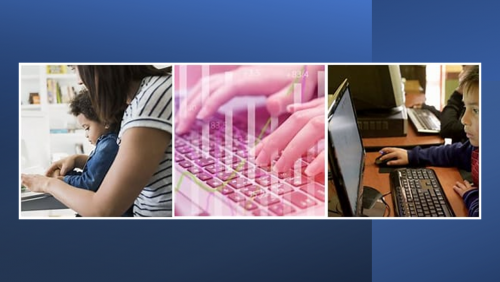
THE DIGITAL DIVIDE
What is the Digital Divide?
The digital divide refers to the gap between demographics and regions that have access to modern information and communications technology and those that don't have access. Though the term now encompasses the technical and financial ability to utilize available technology—along with access (or lack of access) to the Internet—the gap it refers to is constantly shifting with the development of technology. When the term was first used in the late 20th century, for example, it described the gap between those who had cellphone access and those who did not.
KEY TAKEAWAYS
The digital divide encompasses the technical and financial ability to utilize available technology, along with access (or lack of access) to the Internet.
Digital divides exist between developed and developing countries, urban and rural populations, young and educated versus older and less-educated individuals, and men and women.
The urban-rural divide is the single biggest factor in the digital divide.
The consequences of the digital divide include isolation, which can affect mental health; educational barriers as post-secondary education increasingly moves online; and worsening gender discrimination.
The coronavirus pandemic has exposed the differences in digital coverage in the U.S.—for example, among children forced to attend school remotely and in less affluent communities where people have struggled to get vaccination appointments.
Understanding the Digital Divide
The digital divide describes the gap between people who have access to affordable, reliable Internet service (and the skills and gadgets necessary to take advantage of that access)—and those who lack it.
This is an issue within many countries, with rural populations much more likely to be cut off from digital technologies than city residents. The divide also exists between countries and between continents. And it exists between men and women: In 2019, 55% of the global male population was using the Internet, compared to 48% of the female population.
Beyond the gaps between developed and developing countries, rural and urban populations, and men and women, there are three general types of digital divide described in the literature:
- The access divide—This is the most visible digital divide. It refers to the socioeconomic differences between people, and their impact on people's ability to afford the devices necessary to get online. In developing countries, many people have limited access to technology or the Internet and do not have the skills necessary to use it effectively.
- The use divide—This refers to the difference in the level of skills possessed by individuals. There is a generation gap when it comes to the skills necessary to use the Internet. It is also affected by the quality of education that an individual receives. Younger, educated people tend to have more skills than older, less educated individuals.
- The quality-of-use gap—This measure is a little more complicated. It refers to the different ways that people use the Internet and the fact that some people are far more able to get the information they need from it.
These gaps in connectivity and skills reflect existing differences in wealth and access to education, as well as gender discrimination. The digital divide also exacerbates these same differences by barring many people from the information necessary to break out of their current living situation.
The global digital divide
For many years, the global digital divide was seen as a consequence of economic development. As countries and individuals became richer, the common expectation was that they would purchase digital devices and infrastructure and the digital divide would close naturally.
Yet incomes have risen around the world over the past two decades, and access to digital services has remained stubbornly low in much of the developing world. In many cases, this is due to a lack of investment in Internet infrastructure—citizens may have Internet-enabled devices, but still no connection to the World Wide Web. The Internet penetration rate still varies widely among continents: In 2020, 94.6% of North Americans had internet access, compared to 39.3% of Africans.
But those statistics hide a lot of variation within countries and regions. Large countries with ocean borders tend to have much better Internet access, even when they are underdeveloped in other areas. This is why, in 2020, the International Telecommunication Union (ITU), the United Nations agency for information and communication technologies, started to provide statistics on landlocked developing countries and small island developing states based on aggregate statistics in the developing world.
Similarly, there are major disparities in Internet access even within highly developed countries. Many rural Americans are still without adequate Internet access, and still more lack the skills to take full advantage of the access they do have. Indeed, the most accurate predictors of the digital divide are not age or country. They are educational level and the urban-rural divide. According to recent studies, roughly 72% of people living in urban areas globally have Internet access in their homes, compared to less than 40% of those who live in rural areas.
Some analysts fear that, instead of narrowing, the digital divide is getting wider. In addition, some questionable business practices appear to be widening the gap even within developed nations: The ongoing debates about net neutrality and versioning can be seen as issues about equitable access to the digital world.
Consequences of the Digital Divide
Until quite recently, access to the Internet was seen as a luxury, and disparities in digital access were seen in largely the same terms. However, there is now widespread consensus that technological discrimination is a form of social exclusion because it takes essential resources for wealth development away from certain citizens.
This is most visible when one looks at the balance of the world economy, and particularly at the rapid growth in the number of jobs that require digital access and skills. In the U.S., for instance, nearly half of all jobs in STEM (science, technology, engineering, and math) are in computing. In 2020, there were more than a million unfilled computer science positions. Lack of access to learning these skills is a barrier to these jobs and the income that comes with them.
You don’t have to aspire to a career in tech to be affected by the digital divide, however. The impacts of the phenomenon reach many people, in several important ways:
- Lack of communication and isolation—The COVID-19 pandemic has brought into sharp focus the isolation that people without Internet access or skills can quickly experience. This can have serious knock-on effects—from not being able to secure appointments for vaccination against the coronavirus to limiting individuals' job prospects and affecting their mental health.
- Barriers to education—As education is increasingly delivered online, those without the resources to access the Internet, including school kids limited to remote learning during the pandemic, can be cut off from opportunities to develop their skills. As a result, children may have educational gaps, and adults may miss out on job opportunities or be unable to gain the basic skills necessary to contribute to their community.
- Worsening gender discrimination—As noted above, the digital divide also exacerbates many existing forms of discrimination. One of the most widespread is gender discrimination. Women who lack equal access to the Internet are unable to gain an education or information that could help them challenge (and have a better chance of raising) their status.
As the world becomes increasingly dependent on digital technologies, these consequences are likely to become more serious and widespread. It is incumbent upon societies to address the digital divide in a holistic way that recognizes its many aspects and negative outcomes.
Bridging the Digital Divide
In recent years, programs have been launched that aim to combat particular aspects of the digital divide. Many of these are being coordinated at the highest level, including within the U.N.'s Sustainable Development Goal (SDG) , which allows individual countries to coordinate their activities toward ending digital discrimination.
Within the developed world, some analysts point to successful 20th-century programs that lifted millions of people out of poverty. One commonly mentioned example is the Rural Electrification Act during the Great Depression, which stands as an example of how the government can help provide technology to underserved areas that private companies don't consider profitable enough to include in their networks.
In addition, the following specific programs have been launched in the past few years to address other aspects of the digital divide:
- The Alliance for Affordable Internet (A4AI)—aims to reduce the cost of broadband Internet in specific areas in the world.
- One Laptop per Child (OLPC)—provides very low-cost laptops to children around the globe and offers online educational programs that help them to develop digital skills.
- Starlink—provides high-speed Internet and global coverage at affordable prices via satellites it has launched into space.
Many countries now also run digital literacy programs aimed at teaching both adults and children the skills necessary to breach the digital divide.
References
Taylor, K. (2021). Digital divide. Retrieved from Digital Divide Definition (investopedia.com)
HOLD ON ... CHECK THIS OUT!
Waves of Kudos: We donate technology products also!!!
A NEW TEMPTATION FOR IMPROVING EDUCATION: Waves of Kudos will help you to adquire your classroom's technology needs.
Questions?
Contact us by Email: byroseonly@gmail.com
Find/Collect those Waves of Kudos from the products/Services offered by our Business Partners
About Maggie's F-W
Maggie’s F-W wants to break the Digital Technology Divide around the world.
MAGGIE'S F- W
Conveying Solutions to the Biggest Priority Challenges in Today's Education
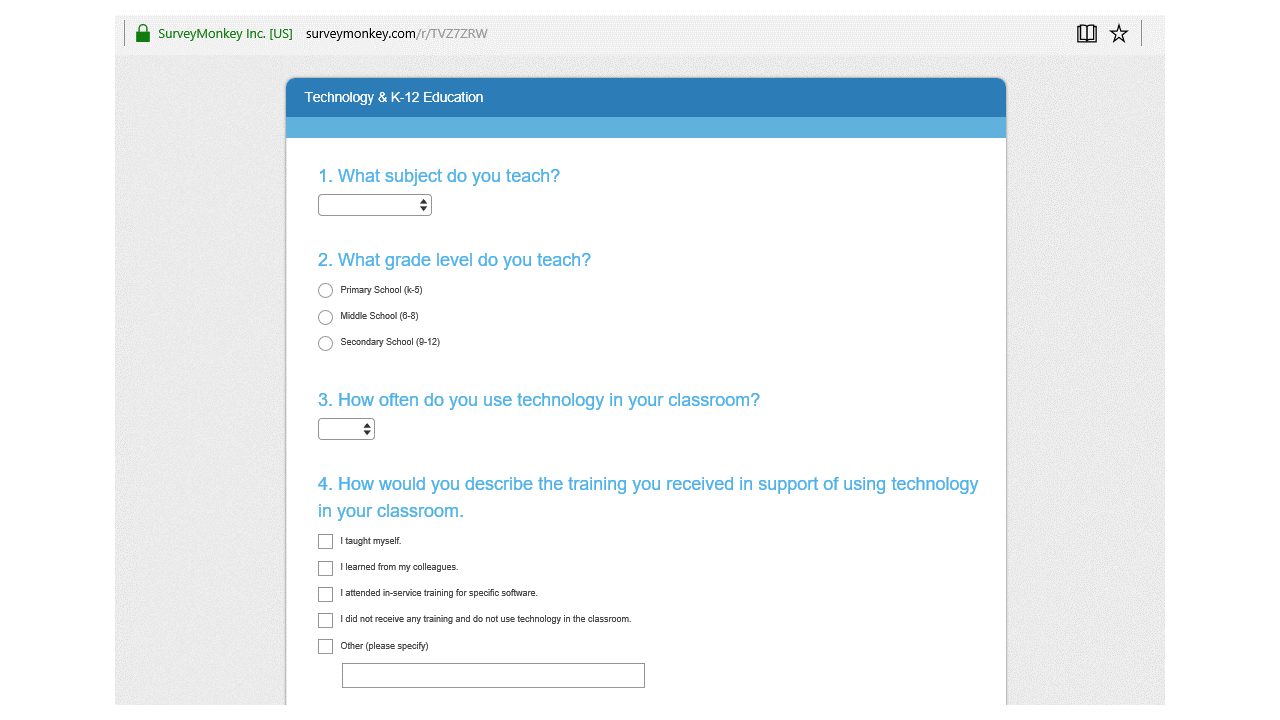
Technology & K-12 Education Survey
Dear Teacher,
As we are partnering with several companies to PROVIDE/DONATE TECHNOLOGY to schools.
We would like to know, what are your class’ technology needs?
Please take few minutes [3-5] to fill out this survey.
Just click on the hyperlink:
https://www.surveymonkey.com/r/TVZ7ZRW
Thank you very much,
WAVES OF KUDOS
HOLD ON ... CHECK THIS OUT!
Waves of Kudos: We donate technology products also!!!
A NEW TEMPTATION FOR IMPROVING EDUCATION: Waves of Kudos will help you to adquire your classroom's technology needs.
Questions?
Contact us by Email: byroseonly@gmail.com
Find/Collect those Waves of Kudos from the products/Services offered by our Business Partners

Hang on...Hang on!
Waves of Kudos: We donate technology products also!!!
A NEW TEMPTATION FOR IMPROVING EDUCATION: Waves of Kudos will help you to adquire your classroom's technology needs.
Questions?
Contact us by Email: byrosesonly@gmail.com
Find/Collect those Waves of Kudos from the products/Services offered by our Business Partners
Hang on...Hang on!
Waves of Kudos: We donate technology products also!!!
A NEW TEMPTATION FOR IMPROVING EDUCATION: Waves of Kudos will help you to adquire your classroom's technology needs.
Questions?
Contact us by Email: byrosesonly@gmail.com
Find/Collect those Waves of Kudos from the products/Services offered by our Business Partners
Waves of Kudos
Conveying solutions to the biggest priority challenges in today's education
WHAT DOES DIGITAL DIVIDE MEAN?
What Does Digital Divide Mean?
The digital divide refers to the difference between people who have easy access to the latest and most modern communication and information technology and those who do not. In recent times, internet access is increasingly seen as the primary advantage that many technologies can grant in that it represents a staggering store of knowledge and resources. In this sense, the term now generally refers to those who have access to internet and those who do not.
The digital divide was once used to describe different rates of technology adoption by different groups and included old communication technology such as telephone and television.
Today, the digital divide may be shrinking as cheaper mobile devices proliferate and network coverage improves worldwide.
References
Techopedia. (2021). Digital divide. Retrieved from What is the Digital Divide? - Definition from Techopedia
HOLD ON ... CHECK THIS OUT!
Waves of Kudos: We donate technology products also!!!
A NEW TEMPTATION FOR IMPROVING EDUCATION: Waves of Kudos will help you to adquire your classroom's technology needs.
Questions?
Contact us by Email: byroseonly@gmail.com
Find/Collect those Waves of Kudos from the products/Services offered by our Business Partners

Hang on...Hang on!
Waves of Kudos: We donate technology products also!!!
A NEW TEMPTATION FOR IMPROVING EDUCATION: Waves of Kudos will help you to adquire your classroom's technology needs.
Questions?
Contact us by Email: byrosesonly@gmail.com
Find/Collect those Waves of Kudos from the products/Services offered by our Business Partners
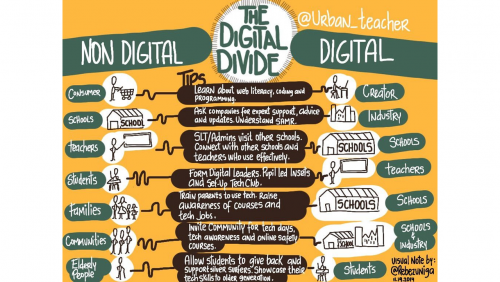
5 WAYS THE DIGITAL DIVIDE AFFECTS EDUCATION
5 Ways the Digital Divide Effects Education
The incorporation of information technology in learning has drastically transformed the society especially to those who can access the services. On the contrary, to the people who cannot access these services, they remain in the dark, and this has led to a new stratification in the society whereby, the haves get more vibrant with new ideas while the have-nots remain conservant to the old ideologies. The huge disparity in access to information and communication technology can be either geographical or socio-economical, and the education sector is adversely affected by this rift. Impacts of the digital divide are felt in all spheres of life, and we should question how does a digital divide pertain to education.
What is the digital divide in education?
The access to ICT in this age of technology is a broad topic that encompasses availability of hardware, software, accessory equipment, and networking as well as unlimited access to reliable information, especially in a formal schooling set-up. The inequality in access to technology is vividly eminent in every society, and some of the contributing factors to digital divide include, poverty and poor infrastructure, corruption, and bureaucracy as well as education and technical support among others. The education factor in digital divide is like the dilemma of egg and chicken: both are interrelated and knowing which one precipitate the other is difficult.
There were over 4.2 Billion internet users as at June 2018, while these figures may look impressive mammoth portion of the population is not well connected, and this may be detrimental considering the importance of ICT in education and general development of a country.
How does the digital divide affect education?
Over two decades ago when information technology was introduced in education, expectations were high, and the underprivileged lot in the society got optimistic. However, this has not happened, and the digital gap has widened quite fast, and impacts are now vivid.
1. Lack of exploitation of full potential hence low performance
Individuals hailing from low-income families are much limited to the access to information that is crucial in advancing their education and coming up with innovative ideas since they can’t afford connectivity to the web. As such, most students from underdeveloped countries will only do programs that are theoretical and don’t involve intensive researches. Limitation by the range of information available to such students is discouraging, and often they will either avoid pursuing involving courses, or if they register, the performance is poor.
2. Unfair competitive edge
Presently, many universities worldwide are embracing technology, and most activities including assignments and presentation of learning material are made available online. This gives superior students who can access the internet unfair competitive edge over their less privileged counterparts. The poor will remain void of crucial information presented online concerning academia, and thus they will always lag, and this may be summed up by poor performance. In cases where the gradation system is made online, those in the lower divisions will not be able to monitor their progress and strategize hence they often lack the motivation to continue.
3. Enhanced convenience in learning
Courtesy of integration of technology in education, you can now learn from the comfort of your living room on distance learning program. The elites are empowered because they have the machinery to support this kind of advancement while the poor are faced with many hurdles in their endeavors to achieve quality education, and they may have to travel to institutions miles away.
4. A difference in the learning experience
While the rich can easily access schooling materials online and work on their programs in a flash, the people in lower socio-economic classes are disadvantaged and have to undergo long hours of cumbersome studies in meeting the objectives of the course.
5. Decreased productivity among the poor
Most underdeveloped countries tend to major on the technical training or lest they produce half-baked graduates because of inadequate training due to limited research abilities as connectivity to the internet is limited besides having low cadre training equipment.
How did the digital divide affect education in the United States?
The United States being a superpower with a very impressive per capita income has a great obligation in ensuring equality in information technology access among its citizen and further influencing the global trends. Expectations are high; however, the real situation is different, and the US has for an extended period been caught in the digital divide.
In the US, digital divide did widen the gap between the rich and the poor regarding academic performance and later economically. The rich could access the latest technology and get access to the best available learning aids. As a result, they achieved excellence in education while the poor remained to stagnate glued to obsolete old ideas. Besides, students from the poor neighborhood could not gain admission in schools that were adamantly embracing ICT; thus they remained exclusively for the affluent in the society.
What are the implications of the digital divide in education?
Education should be liberating and is often seen as a standardizing factor in life. By acquiring knowledge, one gets capacitated to face life situations and provide solutions in promoting the development of a country. The massive digital divide in education means a great hindrance to the development of the underdeveloped world since they won’t be capable of inventing new technologies and conducting researches aimed at promoting the living standards of inhabitants. Furthermore, the digital divide in education encourages the dependence syndrome; one will subscribe to unproven ideologies since they lack a mechanism of creating or scrutinizing. Also, the developing countries seek more donations to bridge the digital divide.
How to fix the digital divide in education
Considering the vital role ICT plays in school, how to bridge the digital divide in education is a major nightmare for countries worldwide in ensuring effective equality in education. Commendable efforts to bridging the gap are now escalated world over, and it goes beyond the provision of devices. Some of the critical adjuncts in narrowing the digital divide include; promoting digital literacy through campaigns or incentives, partnerships with successful entities and robust networking. Bridging the digital gap in education is a gradual and costly process that is a prerequisite for development.
References
Steele, C. (2018). 5 Ways the digital divide effects education. Retrieved from 5 Ways the Digital Divide Effects Education | Digital Divide Council
MAGGIE'S F-W
Our Vision
Maggie’s F-W wishes to be recognized as a leader institution of Solving Problems in education that understands the needs of education in USA and Worldwide. We strive to apply our knowledge and understanding through a variety of programs, preparing Maggie’s F-W to exceed teacher/employer/ student’s expectations, refurbish communities, and change lives forever.
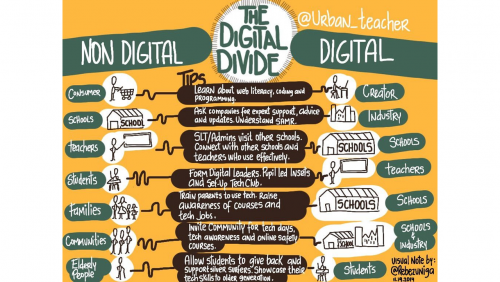
Hang on...Hang on!
Waves of Kudos: We donate technology products also!!!
A NEW TEMPTATION FOR IMPROVING EDUCATION: Waves of Kudos will help you to adquire your classroom's technology needs.
Questions?
Contact us by Email: byrosesonly@gmail.com
Find/Collect those Waves of Kudos from the products/Services offered by our Business Partners
UNDERSTANDING THE DIGITAL DIVIDE IN EDUCATION
Understanding the Digital Divide in Education
The Apple I personal computer first hit stores in 1976, and from 1984 to 2015, the number of people who had a household computer increased by 72 percent, according to ThoughtCo. With the increase in internet capabilities and in the number of people who had access to computers and the internet in their homes, educators began relying heavily on digital technology. This is how the digital divide in education began.
While 87 percent of households in the US currently have access to a computer, smartphone, tablet, or other internet-enabled device and 73 percent have access to the internet, a digital divide remains. The issue lies mostly with access to high-speed broadband, which is required for individuals to be able to make use of much of what’s available on the internet.
Marginalized communities including people of color, low-income individuals, English-language learners, people with disabilities, and populations experiencing homelessness are among those most likely to lack access to high-speed internet. The impact of the digital divide on these students has been significant and—due to transition to online learning during the coronavirus pandemic—continues to worsen.
What Is the Digital Divide?
The digital divide in education is the gap between those with sufficient knowledge of and access to technology and those without, according to the ACT Center for Equity in Learning. To examine the divide requires looking at who can connect to what and how they do so. For example, a student who has multiple laptops in their home and has access to high-speed broadband likely will have better educational success than someone who has one computer to share with their entire family and only has dial-up internet access.
As teachers use more technology in their courses, this divide increases and continues to perpetuate socioeconomic disparities for underserved populations, according to the ACT Center for Equity in Learning. About 17 percent of students are unable to complete their homework due to their limited access to the internet. Additionally, 50 percent of low-income families and 42 percent of families of color don’t have the technology required for online education, according to the Education Trust.
To fully understand the impact of the digital divide, looking at the rise of technology in the classroom is an important first step.
History of Technology in Education
The integration of technology into the classroom began during the Cold War era with the Soviet Union’s launch of the Sputnik satellite into space. With America’s initial loss in the race to space, the federal government began pushing math and science education and embracing technology. In 1963, the Vocational Education Act provided funding for technology in schools, according to Classcraft. In the early 1980s, computers made their way into the classroom. By the mid-1980s, Apple computers became common in classrooms.
While the initial funding for technology in schools came from the government, schools had to continue to fund technological advancements once the federal money ran out. Since schools are funded through local property taxes, the schools in low-income areas didn’t have as much money to spend on technology as those in high-income communities.
In the next two decades, technology began to advance rapidly. The introduction of email, video, and other digital media made two-way digital communications possible, including between teachers and students. The increased emphasis on science, technology, engineering, and mathematics (STEM) in the 2000s brought about an even greater implementation of technology in education. But, as technology advanced and computers became the norm in most American classrooms and households, school budgets couldn’t keep up, increasing the digital divide in education and creating resource gaps among students.
How Did the Digital Divide Affect Education in the US?
The impacts of the digital divide in education have been significant. The digital divide has affected individual students in the same school as well as groups of students across districts, lowering the academic outcomes of low-income, underserved students and districts.
Impact of Individuals in the Same School
Digital disparities are seen within individuals in schools. A school can implement technology and teach every student how to use it, but if a student doesn’t have access to a device or high-speed internet at home, they won’t show the same academic results. A study by the National Center for Education Statistics found that students who didn’t have access to the internet or only had dial-up in their home could be broken down as follows:
- 27 percent were American Indian
- 19 percent were Black
- 17 percent were Hispanic
- 12 percent were Pacific Islander
- 7 percent were two or more races
- 7 percent were white
- 3 percent were Asian
Students from marginalized communities are disproportionately impacted by the digital divide. In addition to limited access to the internet, 19 percent of underserved students have only one device at home—a rate that is three times higher than it is for more privileged students.
Unequal access to high-speed internet and home devices in conjunction with the increase in teachers assigning homework assignments that require internet use—in 2009, seven out of 10 teachers assigned homework that required using the internet—has made for an expanding digital divide in education. This inhibits students from completing homework, putting them behind in their classes. The result is a disadvantaged educational and socioeconomic outcome for underserved groups of students.
Impact of Student Groups in a District
The disparities between underserved and privileged students in a school are also seen between districts. Rural school districts are more likely to have no or only dial-up internet, and their students are less likely to have multiple devices at home.
Additionally, districts in different areas of a state experience a digital divide due to the socioeconomic status of that area. For example, the Sto-Rox district of Pittsburgh, Pennsylvania, was ranked one of the worst districts in the area. The area’s low socioeconomic status has resulted in limited funding for education. The district has only 30 to 60 laptops to share among 1,300 students. This has resulted in students leaving for other districts where they will have more technology and academic opportunity.
Another district near Pittsburgh is on the opposite end of the digital divide because of its partnership with a local university: Carnegie Mellon. The college is helping develop the computer science curriculum in the district as well as training teachers at the school to prepare students for a better digital education.
The same thing is seen at schools in districts in Silicon Valley versus other districts in California. These districts partner with major corporations like Google to provide every student with a Chromebook to use at home and in class, according to EqOpTech. Their socioeconomic status in conjunction with the technological support they receive sets up these students for academic success.
Overall Impact of the Digital Divide
Students experience the digital divide in education across the US. Four major outcomes can result from less access to digital technology, according to the Digital Divide Council:
- Low performance: Low-income families have less access to information that will advance their education.
- Competitive edge: Students with access to the internet will do better when they enter college due to universities embracing technology at an increasing rate.
- Convenience in learning: Privileged students have access to better devices and face less hurdles to complete their education.
- Different learning experiences: Students from low socioeconomic areas face more disadvantages and have to spend more hours to complete learning objectives.
These outcomes most impact students of color and those in low-income families. They also inhibit the long-term success of students.
Equality in Online Learning
The digital divide has been growing for years, but the global pandemic has accelerated its growth. Moving to remote learning in the spring of 2020, students in low-income areas and students of color experienced a disadvantage over other students. Additionally, the factor of childcare has been added to the digital divide in education. Parents in low-income areas who are more likely to work multiple jobs have struggled to find the time to help their children with their schoolwork, whereas high-income parents have the flexibility to take time off of work and the resources to hire tutors to aid their student’s education. As students have gone back to school in the fall—some fully remote, some fully in person, and others in a hybrid model—reaching equality in online learning has been the primary goal.
As of September 2, 2020, 73 percent of the 100 largest districts in America have chosen to instruct fully online, according to Education Week. This affects over eight million students. A study done by the Pew Research Center in the spring of 2020 found that 36 percent of low-income students couldn’t complete their schoolwork because they didn’t have a computer compared to 14 percent of middle-income and 4 percent of upper-income students.
While schools in more affluent districts are able to provide laptops to all students in need, others don’t have the funding. To help increase equity, some districts have held fundraising events. For example, Chicago public schools received $50 million to provide high-speed internet to 100,000 students. Whereas other districts who lack funding, such as Palo Verde Unified School District in California, provided learning packets every two weeks instead of holding online classes.
To aid in device and internet equity, some states are ensuring every student has access to Wi-Fi and a computer. The California Department of Education confirmed it will provide both of these resources to all students in need.
Bridging the Digital Divide in Education
As the global pandemic has thrown the digital divide into the spotlight, many educational leaders have made headway in bridging the digital divide in education. From providing internet to students with the most need, to ensuring every student has their own computer, leaders are beginning to increase equity among districts and students.
The California Bridging the Digital Divide Fund has raised $12.3 million to help allocate supplies to students, and a California digital divide task force and fund collected donations that bought 56,700 laptops and provided 94,000 hot spots, according to EdSource.
Chicago public schools have also made headway, providing free high-speed internet to 100,000 students. Additionally, they have begun building a permanent support system for Chicago families known as Chicago Connected. This effort works with philanthropic partners to bridge initial costs and will provide internet access to families who need it most.
To further help, the Education Trust recommends educational leaders and policy makers do the following:
- Survey the needs of families most impacted by the digital divide.
- Create conversations with leaders about how to fund additional resources.
- Connect with potential donors and technology companies about digital resource partnerships.
- Look at the school and evaluate the present digital divide, then allocate resources to bridge the gap.
- Provide training and information technology support to educators and parents in the most impacted districts.
- Create a plan with education agencies on how to bridge the gap long term.
By following these steps, leaders can help increase student academic outcomes and lessen the digital divide for future generations of students.
References
AU School of Education. (2020). Understanding the Digital Divide in Education. Retrieved from Understanding the Digital Divide in Education (american.edu)
Our Vision
Maggie’s F-W wishes to be recognized as a leader institution of Solving Problems in education that understands the needs of education in USA and Worldwide. We strive to apply our knowledge and understanding through a variety of programs, preparing Maggie’s F-W to exceed teacher/employer/ student’s expectations, refurbish communities, and change lives forever.

Waves of Kudos
Conveying solutions to the biggest priority challenges in today's education
Hang on...Hang on!
Waves of Kudos: We donate technology products also!!!
A NEW TEMPTATION FOR IMPROVING EDUCATION: Waves of Kudos will help you to adquire your classroom's technology needs.
Questions?
Contact us by Email: byrosesonly@gmail.com
Find/Collect those Waves of Kudos from the products/Services offered by our Business Partners
SCHOOL DISTRICTS ARE GOING INTO DEBT TO KEEP UP WITH TECHNOLOGY
School Districts Are Going Into Debt To Keep Up With Technology
"In Silicon Valley, cash-strapped schools are selling bonds to buy student laptops"
"This story about school debt is part of the series Districts in Debt, which examines the hidden financial pressures challenging American schools."
.png)
In a combined biology/literature class, students at James Lick High School complete assignments using school-supplied Chromebooks. Amadou Diallo for The Hechinger Report
SAN JOSE, Calif. — At James Lick High School the slate-gray Chromebooks are ubiquitous. Rolling cabinets stocked with dozens of the laptops sit in classrooms where teachers assign them to students for everything from researching hereditary DNA to writing essays. In this majority-Latino school of 1,100 students, 84 percent of whom qualify for free or reduced-price lunch, a federal measure of poverty, school principal David Porter says making the devices readily available is a significant part of an effort to develop digital literacy for students who might otherwise be left behind.
Nationwide, one out of four teenagers from low-income households lacks access to a home computer and, overall, Latino students have less access than their black and white peers, according to a 2018 survey by the Pew Research Center. “We’re doing a disservice if we’re not teaching the next generation how to use technology. Students being able to access it is critical,” Porter says.
Using computers and online resources in the classroom is part of a growing trend in education. What’s unusual about James Lick’s Chromebook program isn’t the laptops themselves, but how they were paid for. In this school on the eastern edge of Silicon Valley, just a 20-minute drive from Google’s Mountain View headquarters, the district has put these laptops into students’ hands by going into debt, authorizing a $16.2 million sale of general-obligation bonds intended almost exclusively for the laptop purchases.
It’s part of an emerging shift in how schools are thinking about paying for technology, one that city and county officials say is necessary because of inadequate state funding and a highly decentralized education system that leaves smaller, less affluent districts with few other options. Yet it’s an approach that some observers say not only violates the principle of taxpayer-financed debt, but exacerbates inequities for schools in communities lacking the municipal wealth of their higher-income counterparts.
Bonds have been a long-standing source of revenue for public education. School districts sell the bonds to investors for an immediate influx of cash, with an agreement to pay back the money to bond holders over an extended period of time, commonly 20 to 30 years, with interest. Traditionally, bonds have been used to pay for capital assets that hold their value for decades. Issuing a 30-year bond to finance a new school building makes sense, says Ross Rubenstein, a professor at Georgia State University who specializes in public finance and education policy.
Using long-term debt to pay for technology that may be obsolete in a couple of years, he says, is “like taking out a mortgage to buy groceries.” Yet that is precisely what school districts across the country, including some in California, Texas, Minnesota and Kansas, have done in a desperate push to get technology into classrooms.
“One of the fundamental ideas behind debt is you want to try and match the life of what you’re purchasing to the life of the debt,” Rubenstein says.
Related: School districts’ uphill battle to get good deals on ed tech
In 2008, the San Diego Unified School District won voter approval for $2.1 billion in bond sales. While the majority of that money was for school maintenance and construction, the district allocated some of those funds for technology, buying more than 21,000 iPads. With bond payments stretching out as far as 40 years, it’s been estimated that some of these $400 iPads may ultimately cost the district more than $4,000 each.
"Using long-term bonds for tech are “like taking out a mortgage to buy groceries,”
Ross Rubenstein, a professor at Georgia State University.
An attempt by the Los Angeles Unified School District to use a long-term bond program to buy student iPads in 2013 resulted in not only high costs for the devices, but also separate SEC and FBI investigations into the legality of the bond spending and possible corruption in the vendor bidding process.
Yet, the 2014 bond sale used to buy Chromebooks for James Lick and the rest of the East Side Union High School District schools has a much different structure. Designed exclusively for technology purchases, these bonds have much shorter payment terms. And because the laptops will obviously need to be replaced every few years, this voter-approved bond measure authorized a recurring series of short-term bond sales — future offerings commence after current obligations are paid off — the last of which will come due in 2035. This structure provides for future financial stability in a fiscally responsible manner, according to district superintendent Chris Funk.
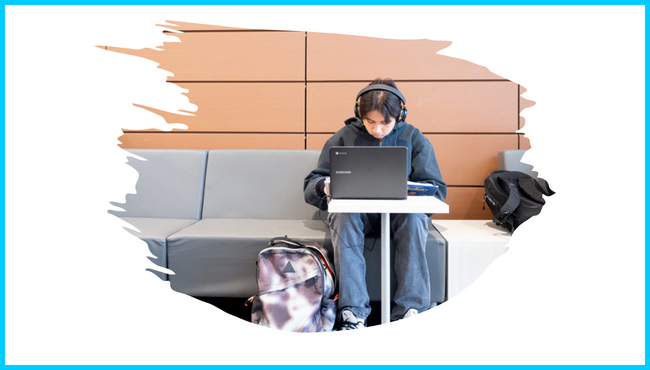
During a free period, Juan Negrete, a 17-year-old senior at Yerba Buena High School, works on an assignment using a school-supplied Chromebook.
During a free period, Juan Negrete, a 17-year-old senior at Yerba Buena High School, works on an assignment using a school-supplied Chromebook. Amadou Diallo for The Hechinger Report
By 2014 the district had won approval for $116 million in short-term bonds sales, including the $16.2 million for the Chromebooks, software licenses and the infrastructure needed to maintain them.
“In a traditional long-term bond the interest would be close to $100 million,” Funk says. “The way we’re doing it dropped the interest down to like $25 million because we’re paying off the debt every 4 to 5 years. That gives a school district like ours a source of revenue for the next 20 years that we can rely on for technology.”
Finance experts agree that school bonds offer substantial savings over most other types of borrowing, given that bonds are backed by a reliable source of funds: property taxes.
“There is a lower cost in using short-term debt rather than going out and getting a high-interest lease with a [laptop] vendor, for example,” says Bart Hildreth, a professor at Georgia State University who studies municipal finances. But bonds are not free money, he cautions. “The bond transaction itself has up-front costs. When you issue debt you have to get a bond rating, get a lawyer, investment banker, broker dealers and prepare the official statement.”
Borrowing that $16.2 million dollars for the Chromebooks cost the East Side Union district an additional $357,000 in these up-front costs on top of what appears to be roughly $1.7 million in interest payments, according to the bond filing.
The best option, experts say, is to pay for things like laptops with cash, not debt.
Related: The ‘dirty secret’ about educational innovation
Reference
Diallo, A. (2019). School districts are going into debt to keep up with technology. Retrieved from https://hechingerreport.org/school-districts-are-going-into-debt-to-keep-up-with-technology/


